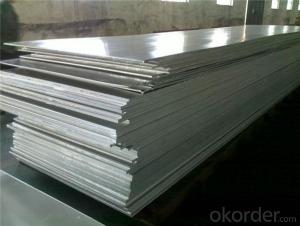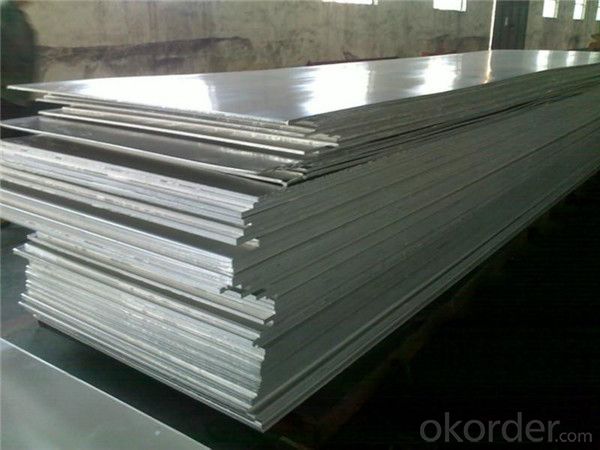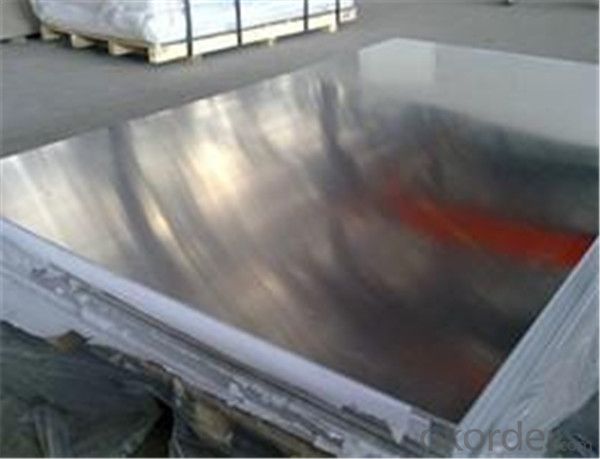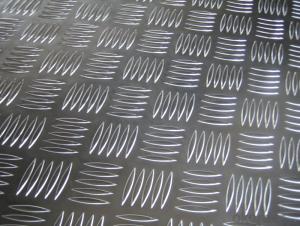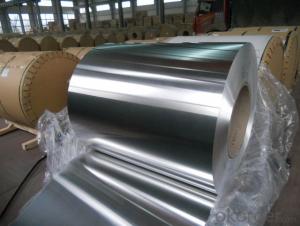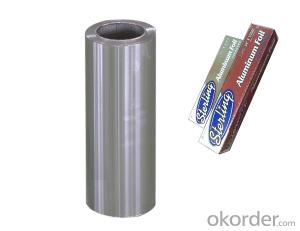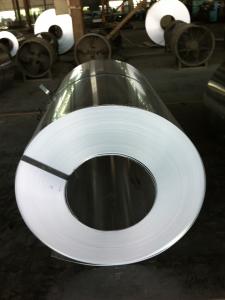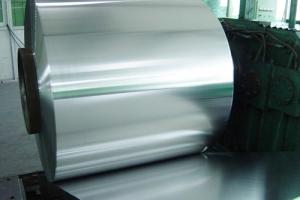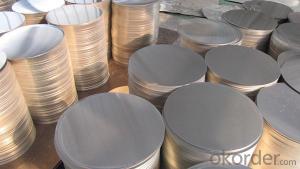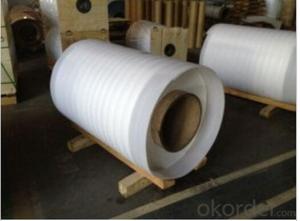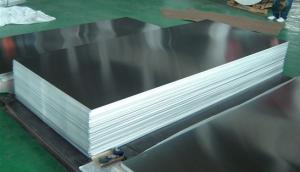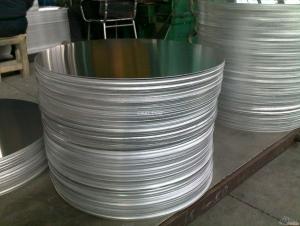Aluminum Expanded Metal Sheets for Kitchen - 1100 O H14 H16 H24
- Loading Port:
- Shanghai
- Payment Terms:
- TT OR LC
- Min Order Qty:
- 5 m.t.
- Supply Capability:
- 10000 m.t./month
OKorder Service Pledge
OKorder Financial Service
You Might Also Like
Packaging & Delivery
Packaging Details: | wooden cases is suitable for long distance exporting. |
Delivery Detail: | 30-45 days after receiving L/C or payment in advance |
Decorative Coil/Plate | |
Alloy: | 1100/8011/3003 |
Temper: | H16/H18/H26 |
Thickness: | 0.10mm~0.50mm |
Width: | 1000mm--1300mm |
Tensile Strength: | 155~230Mpa |
Elongation: | ≥2.0% |
T Bend: | within 2T |
PS Board Base | ||
Alloy: | 1060 | |
Temper: | H18 | |
Thickness: | 0.14mm~0.27mm | |
Width: | 300--1250mm | |
Tensile Strength: | ≥140Mpa | |
Elongation: | ≥2.0% | |
Circuit/Lighting sheet | ||
Alloy: | 1060/1100/8011/1050 | |
Temper: | H16/H18 | |
Thickness: | 0.14mm~0.50mm | |
Width: | 300--1250mm | |
Tensile Strength: | 165~195Mpa | |
Elongation: | ||
Brief Introduction for Cold Rolled Steel Coil
Cold Rolled Steel Coil is steel that has been worked below its recrystallization temperature by passing it between a pair of rollers. Recrystallization temperature is the temperature at which grains in the lattice structure of the metal have been rearranged, leaving it free of strain and deformations. Cold Rolled Steel Coil is pre-treated before being cold rolled with a process known as pickling, which uses strong acids to remove scale and other impurities. The Cold Rolled Steel Coil is then passed through rollers to reduce its thickness. Most cold rolling takes place in multiple passes and as the size of the Cold Rolled Steel Coil is further reduced, its strength and hardness both increase, but its ductility decreases. After cold rolling, heating the metal up in a process known as annealing can restore some of its ductility. The final Cold Rolled Steel Coil may be manufactured in the form of sheets, strips, bars, or other forms.
Photos

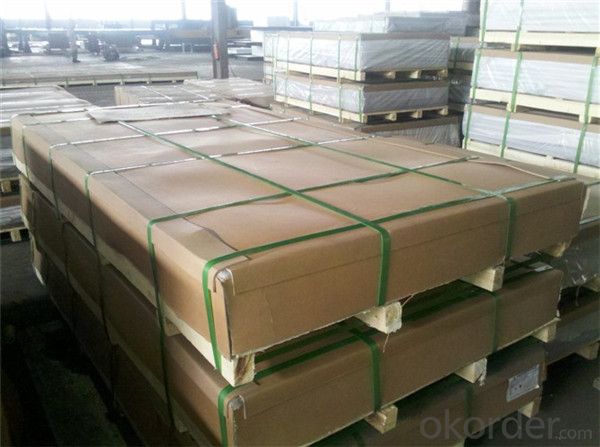
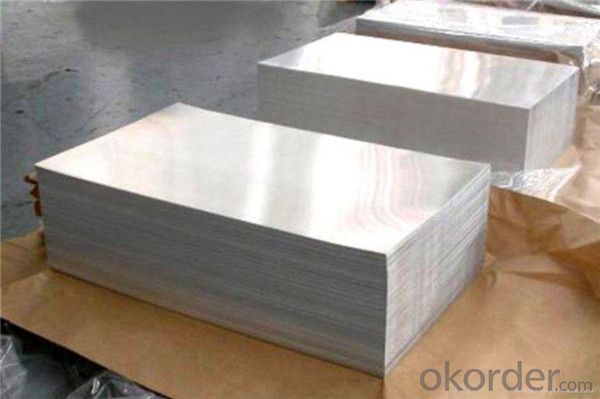
- Q: Can aluminum sheets be powder-coated?
- Yes, aluminum sheets can be powder-coated. Powder coating is a process in which a dry, powdered paint is applied electrostatically to a surface and then cured under heat to create a durable and attractive finish. Aluminum is a suitable material for powder coating due to its lightweight, corrosion-resistant properties. The powder coating adheres to the aluminum surface and forms a protective layer that enhances the sheet's appearance and provides long-lasting protection against wear and tear.
- Q: Are 101 aluminum sheets easy to work with in terms of cutting, drilling, and shaping?
- Yes, 101 aluminum sheets are generally easy to work with in terms of cutting, drilling, and shaping. Aluminum is known for its lightweight and malleable properties, making it more manageable compared to other metals. The 101 aluminum alloy specifically offers good formability and weldability, making it suitable for various fabrication processes. When it comes to cutting, aluminum sheets can be easily cut using common tools such as a saw, shears, or even a simple utility knife. Similarly, drilling holes in aluminum sheets is relatively easy and can be done with standard drill bits. Lastly, shaping aluminum sheets can be achieved through bending, folding, or using specialized tools like a brake press. However, it's always important to use appropriate safety measures and equipment when working with any metal, including aluminum.
- Q: Can 101 aluminum sheets be purchased in small quantities or only in bulk?
- Aluminum sheets can typically be purchased in both small quantities and bulk, depending on the supplier and their policies. It is advisable to check with the specific supplier to determine the availability of purchasing 101 aluminum sheets in small quantities.
- Q: What are the different methods of surface etching for aluminum sheets?
- Aluminum sheets can be surface etched using various methods, each offering unique benefits and applications. Some commonly used methods include: 1. Chemical etching: This technique involves selectively removing a thin layer of aluminum from the surface using a chemical solution. The solution typically contains acids or alkaline substances that dissolve the metal, resulting in a textured or patterned surface. Chemical etching is ideal for decorative or aesthetic purposes due to its precision and ability to achieve intricate designs. 2. Mechanical etching: Also known as abrasive blasting or sanding, this method physically removes the top layer of aluminum using abrasive materials like sandpaper or wire brushes. It can be done manually or with the help of machinery and is commonly used to create a uniform matte finish or prepare the surface for painting or coating. 3. Electrochemical etching: In this method, an electrical current is used to selectively dissolve the aluminum surface. The aluminum sheet is immersed in an electrolyte solution, and a direct current is applied through a stencil or mask to create the desired pattern. Electrochemical etching is commonly employed for marking or labeling on aluminum sheets, as it produces clear, permanent, and highly precise designs. 4. Laser etching: Laser etching involves using a high-powered laser to permanently remove the top layer of aluminum, creating precise patterns on the surface. This method is highly accurate and capable of achieving intricate designs with sharp edges. Industrial applications, such as marking serial numbers, logos, or barcodes on aluminum sheets, commonly utilize laser etching. 5. Photochemical etching: This technique employs a photosensitive material, called a photoresist, to create patterns on the aluminum surface. The aluminum sheet is coated with the photoresist, exposed to UV light through a stencil or mask, and then developed to remove the unexposed areas. The exposed aluminum is subsequently etched away using a chemical solution. Photochemical etching is frequently used for producing high-resolution designs or microstructures on aluminum sheets. When selecting the appropriate surface etching method for aluminum sheets, it is essential to consider factors such as precision, speed, cost, and complexity, as each method has its own advantages depending on the desired outcome and application.
- Q: What are the standard sizes and availability of aluminum sheets in the market?
- The sizes and availability of aluminum sheets in the market can vary depending on the location and specific requirements. Nevertheless, there are generally available sizes that can be found in most markets. In terms of thickness, aluminum sheets are commonly found in the range of 0.02 to 0.2 inches (0.5 to 5 millimeters). Thinner sheets (0.02 to 0.06 inches) are often utilized for lightweight purposes such as signage or crafts, while thicker sheets (0.1 to 0.2 inches) are typically employed for more heavy-duty applications like construction or industrial use. Regarding width and length, standard sizes of aluminum sheets are often offered in 4 feet by 8 feet (48 inches by 96 inches) or 4 feet by 12 feet (48 inches by 144 inches). These dimensions are widely available and suitable for various applications. However, it is important to note that custom sizes can also be ordered or cut from larger sheets to meet specific project requirements. Aluminum sheets can be found in various locations, including local hardware stores, metal suppliers, and online marketplaces. It is always advisable to check with local suppliers or conduct online research to determine the specific sizes and availability in your area. Additionally, different grades or alloys of aluminum may have varying availability, so it is crucial to consider the specific requirements of your project when sourcing aluminum sheets.
- Q: What are the different methods of surface laminating aluminum sheets?
- There exist various techniques for surface laminating aluminum sheets, each with its own distinct advantages and suitability for different purposes. Some of the commonly utilized methods comprise: 1. Adhesive bonding: This involves the application of an adhesive layer between the aluminum sheet and the desired surface material. The adhesive is typically cured through the application of heat or pressure, resulting in a robust bond. This technique is versatile and can be employed with a range of surface materials, including wood, plastic, or glass. 2. Roll bonding: Also referred to as cladding or cold roll bonding, this method entails placing the aluminum sheet between two other metal sheets and subjecting them to high pressure to create a solid bond. Roll bonding is frequently employed in the production of composite materials, such as aluminum-clad steel sheets. 3. Thermal spraying: This process entails melting or heating aluminum powder and using a thermal spray gun to spray it onto the sheet surface. The molten aluminum solidifies upon contact, forming a durable coating. Thermal spraying is commonly used for corrosion protection or as a foundation layer for subsequent surface treatments. 4. Powder coating: In this technique, a dry powder paint is electrostatically applied to the surface of the aluminum sheet. The sheet is then heated, causing the powder to melt and form a smooth and protective coating. Powder coating offers exceptional durability, impact resistance, and a wide array of color options. 5. Anodizing: Anodization is an electrochemical process that enhances the natural oxide layer on the surface of aluminum sheets. By immersing the sheet in an electrolytic bath and applying an electric current, a controlled oxide layer is formed, providing corrosion resistance, improved adhesion for paint or adhesive, and aesthetic finishes. 6. Lamination with protective films: A plastic protective film can be applied to the surface of the aluminum sheet for safeguarding purposes during transportation, handling, or processing. These films offer temporary protection against scratches, abrasions, and dirt. These represent just a few among many techniques available for surface laminating aluminum sheets. The choice of method depends on factors such as desired properties, intended use, and specific application requirements.
- Q: Are the aluminum sheets suitable for decorative purposes?
- Yes, aluminum sheets are suitable for decorative purposes. They offer a sleek and modern look, are lightweight, durable, and versatile, making them an ideal choice for various decorative applications such as wall panels, signage, ceilings, and furniture. Additionally, aluminum sheets can be easily customized, painted, or engraved to create unique and visually appealing designs.
- Q: Are 101 aluminum sheets suitable for solar panel frames?
- Yes, 101 aluminum sheets are suitable for solar panel frames. 101 aluminum is a commonly used grade of aluminum that is known for its excellent strength and corrosion resistance. These properties make it an ideal material for constructing frames that can withstand the outdoor elements and provide adequate support for solar panels. Additionally, 101 aluminum sheets are lightweight, which is important for easy installation and transportation of solar panels. Overall, 101 aluminum sheets are a suitable choice for solar panel frames due to their strength, corrosion resistance, and lightweight properties.
- Q: Can aluminum sheets be used for insulation jackets?
- Indeed, insulation jackets can indeed employ aluminum sheets. Aluminum possesses exceptional thermal conductivity characteristics, enabling it to proficiently deflect heat and hinder the transmission of thermal energy. Consequently, it becomes the perfect substance for insulation jackets, as it aids in preserving temperature regulation and reducing heat loss or gain. Furthermore, aluminum sheets are lightweight, long-lasting, and impervious to corrosion, rendering them a pragmatic option for insulation applications.
- Q: iron-based alloys over aluminum in structural members of bridges and buildings?
- Aluminum generally has a better strength-to-weight-ratio. Steel alloys are still used in some of the parts of a typical aircraft, where tensile strength and toughness are the major considerations, over weight. The landing gear, bolts and pins, hinges, bearings, for example. Steel is used for bridges and buildings, because it's a lot *cheaper* than aluminum, and saving weight isn't nearly as critical as it is in aircraft. Steel is stiffer than aluminum, and It's easier and cheaper to make reliable welds in steel as well. Welding aluminum tends to be time consuming and expensive.
Send your message to us
Aluminum Expanded Metal Sheets for Kitchen - 1100 O H14 H16 H24
- Loading Port:
- Shanghai
- Payment Terms:
- TT OR LC
- Min Order Qty:
- 5 m.t.
- Supply Capability:
- 10000 m.t./month
OKorder Service Pledge
OKorder Financial Service
Similar products
Hot products
Hot Searches
Related keywords
